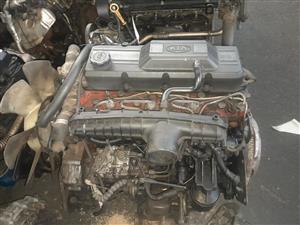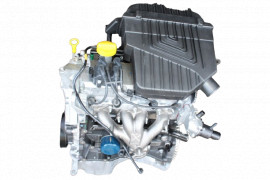Import Engines: A Comprehensive Overview to Finding the Right Fit
Checking Out the most up to date Technical Advancements in Import Engines and Exactly How They Improve Driving Experience
In the realm of automobile engineering, the landscape of import engines is undergoing an extensive makeover driven by sophisticated technical advancements. From the development of turbocharged engines to the integration of crossbreed modern technology, the current improvements are transforming the driving experience in ways formerly unthinkable. As import makers push the borders of efficiency and effectiveness through boosted fuel injection systems and innovative engine administration solutions, the inquiry develops: How do these innovations genuinely impact the means we communicate with our vehicles when driving?

Evolution of Turbocharged Engines
In the auto industry, the advancement of turbocharged engines has dramatically changed the landscape of efficiency and effectiveness. Turbocharging, as soon as mostly seen in high-performance sports cars and trucks, has now come to be a mainstream technology taken on by a variety of vehicles, from small hatchbacks to deluxe sedans. The essential concept behind a turbocharged engine is simple yet reliable - by forcing more air right into the burning chamber, it allows even more gas to be shed, leading to raised power outcome.
Among the vital advantages of turbocharged engines is their capability to supply more power from smaller, extra fuel-efficient engines. This downsizing pattern has actually led to a reduction in discharges without jeopardizing efficiency, making turbocharging an eye-catching option for automakers aiming to fulfill rigorous environmental regulations. Moreover, turbocharged engines use boosted torque at lower RPMs, offering motorists with an extra vibrant and responsive driving experience - import engines.
As modern technology remains to development, we can anticipate more advancements in turbocharging, bring about also higher levels of performance and performance in the vehicle market.
Developments in Fuel Shot Equipments
With the continual progression of automotive technology, substantial improvements have been made in gas shot systems. Modern fuel shot systems have evolved to supply fuel more successfully and exactly into the engine cyndrical tubes, enhancing overall engine efficiency and fuel performance. One of the key technologies in fuel shot systems is the shift from typical port fuel shot (PFI) to even more advanced straight fuel shot (DFI) technology. DFI systems infuse fuel straight into the burning chamber at high pressures, leading to better gas atomization and combustion, causing improved power output and lowered emissions.
In addition, the integration of electronic control units (ECUs) and sensors in fuel shot systems has enabled for real-time changes to fuel shipment based upon various aspects such as engine lots, temperature level, and driving conditions. This level of precision makes certain optimal fuel-air mix proportions, taking full advantage of engine performance while minimizing fuel intake and exhausts. Additionally, improvements in gas injector style, products, and spray patterns have added to cleaner burning and smoother engine procedure. Finally, the continuous developments in fuel injection systems play an important function in improving driving experience by offering enhanced performance, gas economic situation, and ecological friendliness.
Combination of Hybrid Modern Technology
The advancement of fuel shot systems towards greater performance and performance has actually set the phase for the smooth combination of hybrid technology into modern-day engines. Hybrid innovation integrates using standard inner combustion engines with electric propulsion systems, using boosted fuel effectiveness and lowered exhausts. By incorporating electric motors and batteries into the powertrain, crossbreed engines can supplement the internal burning engine during acceleration or low-speed driving, thus improving overall performance.

Boosted Engine Administration Systems
What are the essential developments in engine monitoring systems that are boosting the performance and efficiency of contemporary engines? Engine management systems have actually undergone considerable advancements to maximize engine performance and efficiency. One crucial development is the assimilation of advanced sensing units that continuously monitor various specifications such as engine temperature, air-fuel proportion, and exhaust emissions. These sensors offer real-time data to the engine control unit (ECU), permitting precise adjustments to be made to maximize combustion processes and gas effectiveness.
Additionally, modern engine management systems utilize advanced algorithms and artificial knowledge to examine the data gathered by sensors and make dynamic changes to aspects such as ignition timing, gas injection, and turbocharger increase pressure. This degree of precision and flexibility outcomes in enhanced engine responsiveness, boosted power output, and reduced fuel intake.
In addition, engine administration systems now feature advanced analysis capabilities that can find and resolve issues such as misfires, sensing unit malfunctions, and gas system irregularities in real-time, thereby enhancing general engine dependability and long life. These innovations in engine management systems play an important role in improving the driving experience by supplying optimum performance, fuel effectiveness, and integrity.
Influence of Lightweight Materials
Integrating light-weight materials in engine manufacturing has transformed the automotive industry's strategy to enhancing gas effectiveness and performance. The use of materials such as carbon fiber, light weight aluminum, and titanium has significantly minimized the overall weight of engines, bring about boosted power-to-weight proportions and boosted fuel economy. These lightweight products offer a higher strength-to-weight proportion contrasted to traditional materials like steel, allowing for better sturdiness without endangering efficiency.
One of the crucial benefits of utilizing lightweight materials in engine construction is the reduction of inertia, leading to quicker engine response times and boosted total vehicle dexterity. Additionally, the lighter weight adds to decrease energy intake, making lorries more eco-friendly by decreasing discharges.
In addition, the application of light-weight materials in engine parts such as pistons, attaching poles, and crankshafts has actually enabled engineers to press the have a peek at these guys boundaries of efficiency without compromising integrity (import engines). This development has actually paved the method for more powerful and efficient engines that supply an exceptional driving experience while meeting strict exhausts requirements
Final Thought
In final thought, the most up to date technological developments in import engines have actually significantly enhanced the driving experience. From the evolution of turbocharged engines to developments site here in fuel shot systems, integration of crossbreed innovation, improved engine monitoring systems, and making use of light-weight materials, these developments have collectively improved efficiency, fuel efficiency, and overall driving dynamics. As modern technology proceeds to breakthrough, we can expect also extra interesting advancements in the future of import engines.
Modern fuel shot systems have actually progressed to deliver fuel a lot more efficiently and precisely into the engine cylinders, enhancing total engine efficiency and fuel effectiveness - import engines. By integrating electric motors and batteries into the powertrain, hybrid engines can supplement the internal combustion engine during velocity or low-speed driving, consequently boosting overall efficiency
What are the vital improvements in engine management systems that are boosting the efficiency and effectiveness of contemporary engines? Engine administration systems have actually gone through significant improvements to maximize engine performance and effectiveness. From the development of turbocharged engines to innovations in fuel injection systems, integration of hybrid technology, enhanced engine management systems, and the usage of light-weight products, these technologies have jointly boosted performance, gas effectiveness, and overall driving characteristics.